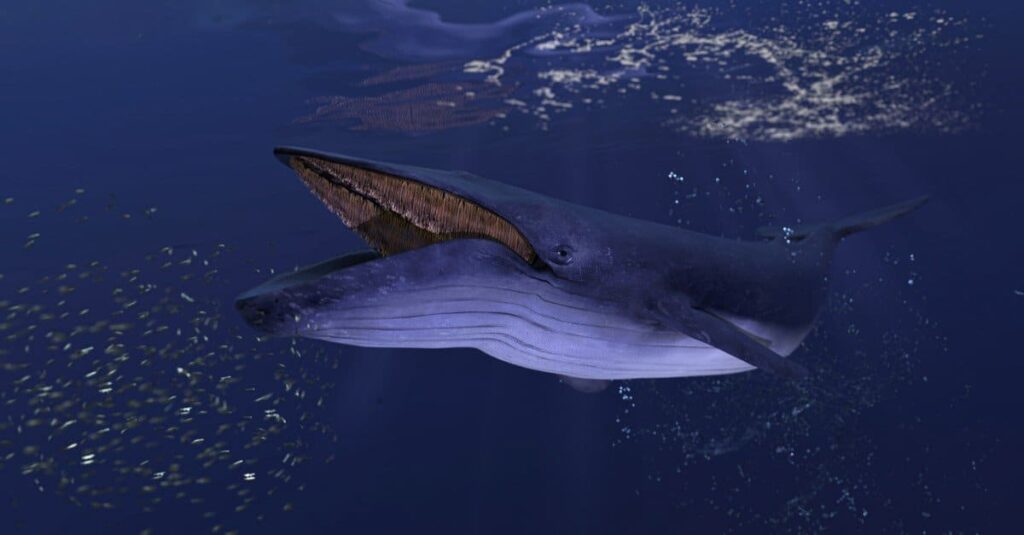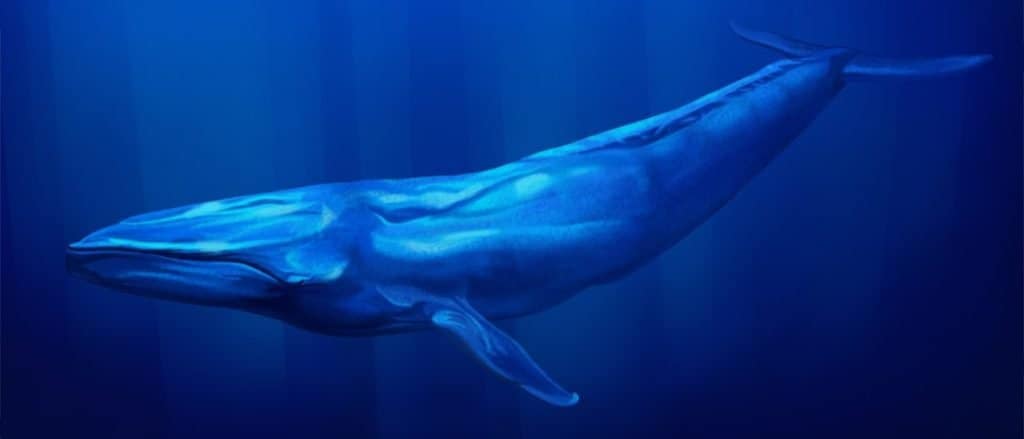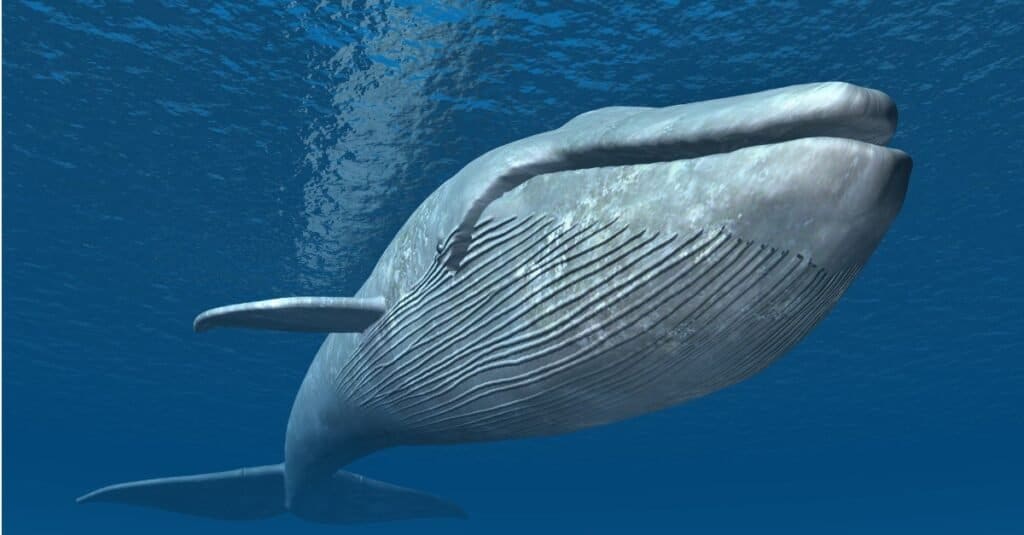Blue whale skeletons are on display around the world so humans can take in their enormity. Intact skeletons are hard to come by and they’re highly sought after by scientists. What are some fun blue whale skeleton facts? We found 6 must-know nuggets of information.
Blue whales are the largest mammal on earth even though they exclusively feed on some of the smallest animals in the ocean. These whales are bigger than almost all of the dinosaurs that are known as well. Sequoia trees are the largest organism on the planet growing taller, heavier, and living longer than blue whales.
They’re an endangered species that has a lifespan similar to human beings. They live up to 90 years on average though the oldest on record was 110. For 60 years, they were overfished for their oil but conservation efforts are promising that the population will bounce back.
Most of their prized whale oil is in their skeleton. What are 6 other fun facts about blue whale skeletons? We’ll discuss a few now.
Fun Facts about Blue Whale Skeletons
Here are fun facts about blue whale skeletons:
- Blue Whale Ribs Don’t Connect to their Backbone
- The Blue Whale’s Mandible is the Largest Bone on Earth
- Blue Whales Have Bones That are Hard and Spongy
- Blue Whales Collapse their Ribcage when they Dive
- Blue Whales Have Earbones But No Ears
- Blue Whales Have Vestigial Hind Legs
- Blue Whale Skeletons Create Ecosystems
Fun Fact #1: The Largest Animal Bone on Earth is the Blue Whale’s Mandible
Blue whales have mandibles that contain long bones which are the biggest in the world. These mandibles make up the whale’s lower jaw and there is one on each side.
These mandibles don’t connect in the middle on the tip of their mouths. This is so they can expand their mouths and take in gigantic gulps of water. Ancestors of the blue whale did this to swallow large prey but today they gulp so they can filter food through their specialized “teeth” that aren’t made of bone.
These teeth are called baleen. They’re made out of keratin and they’re designed to filter out the tiny krill on which they survive. Without their flexible mandible bones in their mouths, blue whales wouldn’t be able to eat the amount of food they need to sustain their enormous bodies.
Fun Fact #2: Blue Whales Have Hard Bones and Spongy Bones

Blue whales have compact and cancellous tissues.
©bekirevren/Shutterstock.com
One of the main differences between a blue whale and a land mammal is the density of their bones. Land mammals need a skeleton that will support their weight against the uncontested forces of gravity.
Whales spend their entire lives in the ocean where water buoyancy exists. Their skeletons don’t need to be as strong in proportion to their weight. Whales that wash up on beaches often experience extreme skeletal injury since their bones can’t support their weight on land.
Blue whales have both cancellous and compact tissues in their bones. Cancellous bone is almost like a sponge whereas compact bone is more like what we think of when we hear the word “bone.” Compact bone is found in areas that have to bear weight, and it almost always encases cancellous bone tissue.
Cancellous bone is very oily which helps with buoyancy and is backup nutrition for the whale on long journeys. Over a third of the oil harvested from hunted whales comes from cancellous tissue.
Fun Fact #3: Blue Whales Collapse their Ribcage When They Dive

The ribcage of a blue whale collapses as they dive deeper.
©Atomic Roderick/Shutterstock.com
When animals that aren’t designed for the depths attempt to go deep into the ocean, the water pressure collapses any air passageways causing serious injury. That’s why deep-sea divers have to use little pods to reach certain depths and can’t leave their chamber.
Blue whales are adapted to deal with this change in pressure as they dive up and down. One of those adaptations involves their ribs. As they dive, their lungs need to collapse to deal with the external pressure of the ocean. Because their ribs aren’t attached to vertebrae, they’re flexible and allow this collapse to occur.
Blue whales don’t use their lungs at all when they’re at deep depths since their lungs are collapsed. Instead, they rely on the massive amounts of blood they have and oxygen they’ve stored in their tissues to sustain them before they resurface.
Their organs are protected by their ribs during this collapse. This needs to happen to protect internal organs from being crushed.
Fun Fact #4: Blue Whales Have No Ears But They Have Earbones
There are bones in their head near air sinuses that allow blue whales to hear extremely well. That’s because these sinus structures interact with fat and allow these bones to pick up even the tiniest of vibrations.
These bones work so well that it’s believed blue whales hear sounds across oceans. They don’t have an outer ear because sound can’t be caught the same way in the ocean as it is on land.
One of the reasons that people can’t hear under the water is because any sound makes the whole skull vibrate. This doesn’t allow for directional hearing, and it makes sounds seem muddled. Blue whales don’t have this problem.
Fun Fact #5: There Are Vestigial Bones for Hind Legs in Blue Whales
A vestigial bone is a bone that’s a remnant of something else. How these remnants come into being is through millions of years of evolution. The vestigial bones in blue whales hint that their ancient ancestors had hind legs.
These particular bones are suspended in the blue whale’s tail right about where legs would be on legged animals. They don’t serve a purpose kind of like the appendix in humans. It’s leftovers from eras that are gone.
Fun Fact #6: Blue Whale Skeletons Create Ecosystems

The bones of blue whales that sink into the depths of the ocean create ecosystems.
©iStock.com/MR1805
A skeleton found in the Pacific Ocean in a deepwater environment was shown to support life. This is due to the lipid concentration in decomposing bones which attracts bacteria. Animals that eat bacteria are drawn to the site which attracts predators.
Some of the animals that live near whale bones in the ocean depths are benthic creatures. This means they’re usually found on the bottom of the ocean. Deep-sea crabs, sea anemones, mollusks, and tube worms are some of these creatures.
On land in California and elsewhere, whale bones are supporting moss growth. This is interesting because it leads to questions about the composition of whale bones and its possible implications on flora in ecosystems.
Thank you for reading! Have some feedback for us? Contact the AZ Animals editorial team.








